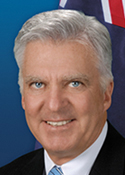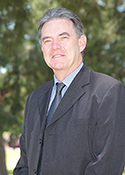Fowler
Margin: Labor 13.9%
Region: Western Sydney, New South Wales
In a nutshell: Based around the Vietnamese community centre of Cabramatta in western Sydney, Fowler has swung convulsively at the last two elections, but such is Labor’s stronghold on the seat that very few noticed.
Candidates in ballot paper order

|
BILL CASHMAN ADAM FARHAN CHRIS HAYES JOAQUIM DE LIMA CRAIG HALL |
Fowler covers an area of western Sydney centred on Cabramatta, whose Vietnamese community causes the electorate to have the highest proportion of residents speaking languages other than English of any electorate in the country. While the seat’s safe Labor status causes it to be overlooked on election night, it offered remarkable results in both 2010 and 2013 for those who cared to look, swinging 13.8% to the Liberals on the former occasion and 8.0% back to Labor on the latter. Following his heavy defeat in 2013, Liberal candidate Andrew Nguyen accused the party of disrepecting the electorate by refusing to allow him to talk to the media. The latest redistribution has dramatically changed the shape of the electorate, while still leaving it centred upon Cabramatta. In the west, all its territory beyond Elizabeth Drive has been transferred to Werriwa, accounting for 45,000 voters, or 43% of the total. It has made up for the loss with gains in the south, absorbing Liverpool, Chipping Norton and Warwick Farm, adding around 13,000 voters from Hughes and 5000 from Werriwa; in the north-west, where 22,000 voters around Bossley Park are gained from McMahon; and in the north-east, where 7000 voters around Fairfield East are gained from Blaxland. The changes cause the Labor margin to drop from 16.8% to 13.9%, mostly due to the gain of Liberal-voting Chipping Norton from Hughes.
Labor has had a secure hold on Fowler since it was created with the expansion of parliament in 1984, being held first by Ted Grace until 1998, and then by Julia Irwin until 2010. Irwin was backed by the old guard of the NSW Right, notably Laurie Brereton and Leo McLeay, but became chiefly noted as a critic of Israel. Her decision to retire in 2010 resolved a headache for the party, which had been absorbed in a game of musical chairs resulting from the effective abolition of Laurie Ferguson’s seat of Reid. Ferguson was at first determined to be accommodated in Fowler, but a deal was in force reserving the seat for a Right faction that also dominated local branches. He was instead made to settle for Werriwa, which at first displaced its member, Chris Hayes, to highly marginal Macarthur. Irwin’s departure created an immensely more attractive opening for Hayes in Fowler, also allowing local favourite Nick Bleasdale to contest Macarthur for a second time (albeit unsuccessfully).
Chris Hayes entered parliament at the February 2005 by-election in Werriwa after the resignation of Mark Latham, having previously been an official with the Right faction Australian Workers Union. He has been a fairly low-profile figure through his parliamentary career, although he has held the position of chief party whip since May 2013. When the draft redistribution boundaries were unveiled in October last year, there were suggestions Hayes might have to make way in Fowler for Chris Bowen, since the originally proposed boundaries had his rock-solid Labor base of Fairfield transferred from his existing seat of McMahon into Fowler. This could potentially have sent Hayes back to Werriwa, which is to be vacated at the election by the retirement of Laurie Ferguson. However, the final boundaries reversed the Fairfield transfer, instead bringing Fowler up to its required enrolment level through the gain of Bossley Park.
Analysis by William Bowe. Read William’s blog, The Poll Bludger.


